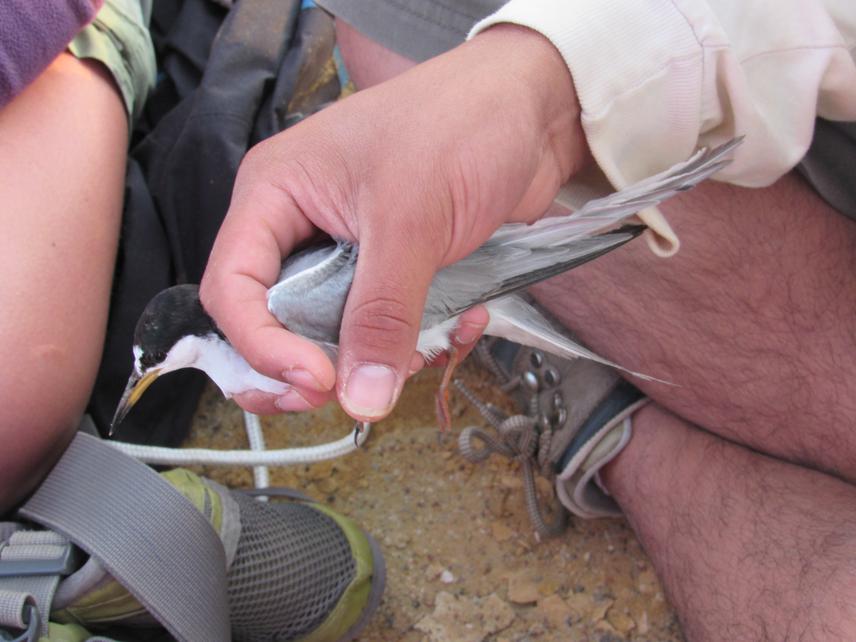Doris Rodriguez Guzman
Identify migration routes, stopover sites, and the present limits of the distribution of Peruvian terns (Sternula lorata), to take appropriate measures for its conservation.

Geolocator attachment.
The Peruvian Tern (Sternula lorata), is one of the smallest members of the family Laridae (weighting just 45gr) it is endemic to the Humboldt current-region. Its range of distribution extends from Guayaquil, Ecuador to Antofagasta, Chile.
The Peruvian tern has been categorized by the IUCN as globally Endangered because of its small population (2500 individuals), which is undergoing continuing declines owing to habitat loss and disturbance on the desert plains where it breeds.
To date, studies on this species have been conducted through direct observation at its breeding grounds in Peru and Chile. These previous studies have mainly focused on breeding behaviour and chick development. However, there is a huge knowledge gap concerning this species foraging movements, winter distribution, and range-wide habitat use. Applications of tracking technology to fill knowledge gaps for this species have been hampered by its small size and cryptic nesting habits.
This project is the first attempt to track Peruvian terns for at least a full year. This will allow us to gather previously unknown data, including foraging habitats and behaviour, seasonal movements, wintering destinations, and site fidelity, thus increasing our understanding of this species’ basic ecology. A newly developed miniature logger, weighing <3% of average body weight, will be used for this research.
This is an opportunity to employ state-of-the-art technology to gather data essential to the conservation of a severely endangered species. By identifying at-sea threats and critical foraging and wintering areas for Peruvian Terns, we also will be contributing to the conservation needs and long-term protection of threatened seabirds engaging local communities in conservation in the process.